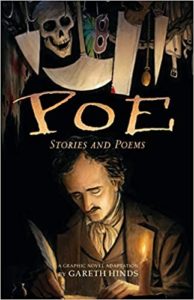Rabbits by Terry Miles
There is a lot going on in this world today. One need not be privy to all the inner workings of society to understand that truth. Like it or not, we live in a complicated era. As is often the case with such eras, members of society try to make sense of the complicated and the complex. From the more traditional media outlets of television, radio, and newsprint to the more recent advent of social media-centric platforms, a myriad of voices attempt to provide some semblance of an answer to the cultural madness we face. Those “half-answers” are varied and often conflicting. Thus, the plight of our era persists. In a world of dissonant voices amongst perplexing circumstances, societal members are left to their own devices to sort order from the chaos.
Okay, now that our stage is set—and done so rather ominously, I may add– let me introduce our main character. Enter, the Conspiracy Theory.
Terry Miles’ debut novel, Rabbits, is about many things. Oversimplifying the plot by reducing it to one mere component or thread merely insults the author. That is not what I’m trying to do. Instead, I’m attempting to highlight a rather significant theme laden within the rationales of this story. Situated within a world as complex and complicated as ours, Miles introduces his readers to a wainscoting-esque society of gamers associated with an underground game known as, you guessed it, “Rabbits.”
Technically, this game doesn’t have a name, and if it does, nobody knows it. In place of a legitimized title, this ancient contest is often referenced in one of three ways. Some choose to call it “the Game”. Others associate it with a Roman numeral ranging from I to IX (a reference to each iteration of the modern version being played). In recent years an overwhelming populace have labeled it with the aforementioned “Rabbits.” We’ll go with that one. Reliable facts concerning this game are few and far between. The one constant that persists (in various wordings and phrasings) is “you don’t talk about the game, like ever”. Yeah, I’m pretty sure Chuck Palahniuk wants his royalties for that bit.
Serious consequences exist for those uncommitted to preserving the Games’ secrecy. By “serious consequences,” I really just mean one consequence. Death. Other tactics are used to keep the game “pure,” but death, that seems to be a biggie, and that which one should be most concerned about. Due to the extremity of disobedience’s ramifications, if one wishes to learn about the game, secret meetings in low key, private settings are often conducted. These meetings are oftentimes under the ruse of an unrelated reason for gathering, and require the dismissal of all electronic devices (because we all know that Big Brother is always watching). It is at one such meeting in a rundown half-pizza joint, half-arcade that our story begins.
Here, we are introduced to K. “That’s it. Just K. One letter.” A self-proclaimed expert on the Game, K has been researching and developing theories on the Game for decades. K’s history with the game is troubled and somewhat sordid. While unknowingly playing the Game as a teenager, an automobile accident takes the life of K’s childhood friend, Annie, and seriously injures both K and Annie’s sister, Emily. At the age of 17, K’s parents die in a tragic accident (unrelated to the Game). To avoid being placed in foster care K successfully seeks emancipation by court order. Subsequently, the intellectually gifted loner quickly develops an obsession–gaming. Naturally, this obsession leads K back into the world of Rabbits. I wrote this in a rather predictable way, but let me assure you, K’s journey is anything but predictable. Still, I can’t give all the good bits away, can I?
Thanks to God’s greatest gifts to mankind (i.e., Reddit and subreddits), our self-appointed Rabbits aficionado gathers somewhat of a following and begins hosting the types of secret meetings described above, whereby K essentially rattles off the same propagandic-ridden script throughout each meeting, while fielding questions about the game–many of which are proffered by Baron (an associate of K’s), though the audience is not aware of that fact. Now, back to the start of our story. As this particular meeting (the one at the pizza joint) is ending, K is introduced to a character claiming to be Alan Scarpio, a multi-billionaire and the rumored winner of the sixth iteration of Rabbits. We quickly discover that this claim holds up to scrutiny, and Scarpio is actively recruiting K to help him “fix the Game” before its next iteration begins, as it is apparently broken.
From this point forward, K’s life takes a turn for the wild. I mean, legit, things get trippy. Scorpio goes missing shortly after his encounter with K. Soon to follow, Baron is found dead in his apartment. With little convincing needed, K recruits Chloe (a long-time friend/former lover of K’s), and the two set out to do what Scarpio seemingly couldn’t. The path they have chosen forces K to reassess epistemological assumptions regarding life, the universe, and time itself. K confronts controversial phenomenologies such as the Mandela effect, gaming theories surrounding ARGs (alternate reality games), and the efficacy of the dark net (an overused Sci-Fi trope for sure, but one that Miles utilizes with finesse). As K’s story wears on, readers are introduced to twists and turns, authentic and well done character development, and a firm, steady pacing that will hopefully define this upcoming author’s future literary endeavors.
Everything about this book is intentional. Terry Miles has a story to tell, and he tells it well (for the most part). One particularity regarding intentionality that I am rather fond of is the ambiguous descriptions of K. No pronouns are used to describe the character. All descriptions of K can easily be applied to those who identify as female, male, or nonbinary. In short, K’s gender is never revealed because K’s gender doesn’t matter.
K is not female. K is not male.
For some these two claims might beckon the question, “What is K, then?”
K is a badass. And that’s all K needs to be.
K is a strong character amongst a myriad of other strong characters. Emphasizing the characters’ internal strengths is refreshing, especially in a day and age where our culture often defines us by our external merits.
Now, let’s get cyclical. This book has a strong lead character, and an equally strong supporting cast (I just said that, right?) Yet, as mentioned above, I don’t identify K as the lead. From the start of this book to the end, the focal point is something else entirely. Once again, the star, who I would argue leads at every turn, is none other than the tried and true Conspiracy Theory.
At its core, this book is a love letter to the classic conspiracy theory genre (even more so than that wild, 1997 Mel Gibson movie). In case one isn’t cognizant of this genre, let’s get cozy.
In short, something’s wrong with this world. The only way to “fix” what is wrong is to expose the truth surrounding the brokenness and the corruption within. The only way to do that is to secretly possess a genius level intellect (while knowing a thing or two about computers) as the powers that be undermine said intellect with labels such as “clinically insane,” “disturbed,” and “out of touch with reality.” Yet, there’s not enough subterfuge in this world to stop the truth from eventually surfacing and destroying the machine of tyranny once and for all. Or is there? For that bit, you’ll have to read this riveting book (hook, line, and sinker).
Be forewarned, however, this book isn’t for everyone. If you’re interested in Sci-Fi, conspiracy theories (probably not real ones, but just the ones that poke fun at the real ones), and philosophical idealism (I promise, that’s actually in the book), then this might be right up your alley. Maybe you just like a well written, well developed story. In that case, this might be your jam as well. If not, that’s fine too. Here at the Joplin Public Library we have a book for just about anyone. If you’re thinking this might be the book for you (or the next book for you) then you can find it in the New Adult Fiction section in the main lobby of the library. I hope you enjoy it as much as I did.





 Poe: Stories and Poems, a Graphic Novel Adaptation, by Gareth Hinds
Poe: Stories and Poems, a Graphic Novel Adaptation, by Gareth Hinds